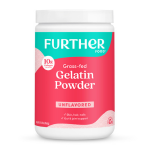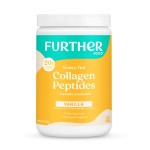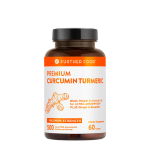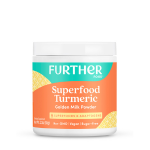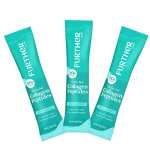Are You a Healthy Omnivore, Flexible Vegetarian, or Modern Vegan? Discover Your Nutritional Style

The little black dress (LBD) is iconic and always in style. Think Audrey Hepburn, Jackie O, or Gwyneth Paltrow, the embodiments of effortless chic. Designers Karl Lagerfeld, Donna Karen, and Michael Kors feature LBDs regularly as the staple of any stylish woman’s wardrobe. My guess is you have at least one, if not several, hanging in your closet.
The best LBDs go with anything, and can take you from a dinner party in the spring to a cocktail party in the summer to a business dinner in the fall, and still look amazing and sleek at a semi-formal holiday event.
While the little black dress is a foundation piece for any woman’s wardrobe, your favorite one isn’t the same as your best friend’s. You adore silk, and she’s comfortable in a lightweight knit. You prefer knee length, and she loves several inches higher. A high waist suits you, and her shape looks best in a straight chemise. While we all love and need our little black dresses, each of us has different preferences when it comes to this basic wardrobe item. We each choose the one that fits our personal signature look.
Once you settle on your little black dress, you adapt it as needed. You add a hot pink sweater and a colorful retro necklace with black tights and heels for the spring dinner party. Summer cocktails call for a lightweight pastel pashmina and swinging chandelier earrings to go with your suntanned legs and gold strappy sandals. You pull out a black fitted jacket for the fall business dinner, add a pop of color with a gorgeous Hermès scarf, and balance it with nude legs and nude heels, the epitome of business chic. You look drop-dead elegant at the holiday party, showing toned, bare arms, layers of pearls, and satin heels with a bow.
Not everyone has a little black dress — or feels the need for one. Maybe you’re more a blue jeans and sneakers sort of person who never needs to dress up. You still make those jeans your own, because you’re you, with your own unique style. Your personality comes through, no matter what you wear. And no matter what you have on, your own needs are still there.
Your Nutritional Style
Just as the little black dress is unique to you, so is your Nutritional Style. Just as the little black dress calls for different accessories throughout the seasons, your Nutritional Style must change with the seasons as well.
Your Nutritional Style is the eating style that makes you feel like the best version of you. Eating for your Nutritional Style gives you energy and allows you to live a sustainable lifestyle without causing stress and anxiety to your body or your mind.
It’s not religion, and it’s not scientific. It’s about discovering your own best way of eating, living, and feeling great. It’s the one that lets you effortlessly release excess weight and returns your natural vibrancy and glow from the inside out. Just like choosing the clothes that make you feel your best, it’s about finding the Nutritional Style that works best for you.
Think of your food and nutrition as unique to you, and not as a way to fit into someone else’s plan or ideal. You’re not meant to live life going from diet to diet that you’re either on or off, and you don’t want to feel good or bad about yourself based on whether or not you stuck to a diet someone else created.
Here’s the best part. Your style can, and should, evolve over time; and it can, and should, change and adapt with the seasons.
The Healthy Omnivore
An omnivore is someone who eats all kinds of foods, including both animal and plant foods. I’m using the term Healthy Omnivore here, not regular ol’ omnivore, because anyone working with me is going to be the healthiest version of an omnivore possible. Animal protein includes red meat, pork, chicken and poultry, fish and all seafood, eggs, and dairy foods, including milk, butter, and cheese.
As a Healthy Omnivore, you eat lots of fresh vegetables, fruits, and an assortment of plant-based proteins, such as beans, nuts, seeds, and whole grains. You’ve learned to eat the right amount of animal protein, an amount that won’t weigh you down or clog your digestion.
The main way omnivores get into dietary trouble is by taking this Nutritional Style too far. When you rely too heavily on animal proteins, consuming them several times a day, it can lead to sluggish digestion, constipation, lack of vitality, dull skin, and weight gain in the short term. Significant health issues, such as heart disease and even cancer, could show up in the long run. Unhealthy omnivores usually indulge too frequently in processed foods, such as pizza, breads and baked goods, and low-quality snacks and sweets. These foods dull your taste for fresh ingredients and whole foods; they crowd out more nutritious foods from your diet.
If, as you read this, you realize you’re an unhealthy omnivore, let’s first focus on upgrading you to Healthy Omnivore status. As your eating patterns evolve, we’ll revisit your eating style season by season, while still allowing you to keep the variety of foods you love.
Don’t worry. If you choose this eating style for the long haul, you’re in good company. Both the Dalai Lama and Michael Pollan believe that animal protein is necessary for optimal health. We’re going to make you the healthiest omnivore possible.
The Flexible Vegetarian
If you’re a Flexible Vegetarian, also called a Flexitarian, you follow a vegetarian or an almost vegetarian eating style. You mostly avoid animal foods and enjoy the amazing variety of plant foods: beans, nuts, seeds, grains, vegetables, and fruits. You sometimes eat some poultry or fish, and also enjoy moderate amounts of eggs and dairy foods.
I’m not using the label vegetarian, because your Nutritional Style isn’t about rules and never eating animal foods. Many of my clients come to me already enjoying this particular eating style. They’re vegetarian, except for when they’re not. They don’t feel guilty if they crave an egg once in a while, or if they enjoy a piece of fish while out to dinner. It’s just food, and if their diet is 90 percent vegetarian, they’re OK with that. Your Nutritional Style is about the style of eating that you love and that makes you feel your absolute best. It’s not about forbidden foods.
The downside to the standard vegetarian diet is that people employing this style often rely too heavily on processed carbs. Many people “fail” on a vegetarian diet because they forget about the vegetable part of the word; instead, they load up on sugary carbohydrates and dairy foods to replace the meat in their diet. A diet that has lots of cheese, deep-fried onion rings, and blueberry muffins isn’t really a healthy diet, even if it doesn’t include red meat. For too many vegetarians, an unbalanced diet leads to weight gain, low energy, skin problems, digestive issues, sinus problems, and more, all because they’re making poor nutritional choices.
When vegetarians find their supposedly healthy diet isn’t working for them, they throw up their hands, claim their hair is thinning, and say their doctor tells them to go home and eat meat. They tell themselves that they just aren’t supposed to be vegetarian.
In reality, they never approached this eating style in a healthy, well-informed fashion. It’s very easy to be an unhealthy vegetarian, but it’s just as easy to be a super-healthy one. Flexibility is the key.
If you’re a Flexible Vegetarian, you allow yourself the occasional serving of meat, poultry, fish, eggs, and dairy products, because you’re aware of your body and know when it is calling for some extra protein and dietary fat. You add generous amounts of greens, vegetables, fruits, and raw foods to your diet to keep your mood balanced and your energy levels high. Most important, you eat this way because you love the taste and variety of wonderful plant-based foods. All over the world, meatless dishes are the basis of richly flavored, highly nutritious ethnic cuisines. With so many food traditions to draw on, a Flexible Vegetarian is never bored by her food!
The Modern Vegan
The fundamental principle of veganism is avoiding all animal foods — even honey, because it’s made by bees — and eating only plant-based foods. Many vegans choose this path for ethical reasons: They wish to avoid harming other living things, and they wish to have a minimal impact on the environment. But being a vegan isn’t a form of penance — it doesn’t mean eating nothing but brown rice and steamed kale. If you’re a Modern Vegan, your Nutritional Style is full of vegetables, fruits, grains, and plant-based protein sources, like dark greens, beans, nuts, and seeds. Many Modern Vegans also choose to eat mostly raw foods. If you have a good understanding of both nutrition and your own body, being a Modern Vegan can be a perfectly healthy lifestyle.
I work with many Modern Vegans in my consulting practice. The key to success for them is to be flexible in what they eat. It’s OK for a Modern Vegan to indulge an occasional craving for raw sheep’s milk cheese or local honey. It’s OK to cut back on raw foods if your body is craving the warmth and easier digestibility of cooked foods.
It’s also OK to bend a bit, especially when you’re away from your own kitchen. One of my Modern Vegan clients needs to attend business luncheons a few times a month. If it’s a buffet, great — there’s always plenty of salad and veggies and usually a meatless choice or two. If it’s a sit-down meal and there’s a vegetarian option, she asks for it. If there’s no vegetarian choice, and the waiter can accommodate her request for more broccoli and no chicken, that’s fine. If not, she quietly does the best she can with whatever is put in front of her. She’ll often eat — and enjoy — the animal-based main course. Remember, it’s food, not religion.
If you’re eating in a healthy Modern Vegan style, you’re aware of how your body reacts to your food and you have a strong interest in nutrition. The downside to the vegan eating style comes if you become too dogmatic about food and diet, jumping on each new diet trend and superfood, and obsessing over your own nutrition. This can lead to ignoring signs that your body may not agree with your latest diet plan. Most Modern Vegans need a little bit of leeway, and I’m giving you the freedom to listen to your body and let go of the strict rules.
Discovering Your Nutritional Style
Discovering your Nutritional Style isn’t complicated, but it is personal. What works for someone else might not be right for you. I’m pretty certain, for example, that the celebrity diet you read about at the salon while waiting for your stylist isn’t going to be the best approach for you.
What is right for you could be as simple as tweaking a few things in your diet, or it might mean a bigger shift in what you eat. No matter what, the goal of finding your Nutritional Style is to make you feel beautiful and energized.
Health and beauty come from being comfortable and happy in your body, having high energy, and a love and passion for life, and knowing that you look and feel the absolute best you can.
Excerpted with permission from Discover Your Nutritional Style by Holli Thompson.
Want more? You might also like:
Caramelized Curry Roasted Cauliflower
Apple Mint Fennel Juice
When Your Autoimmune Disease is Especially Unbearable, Consider These 10 Tips
Want to Feel Good? Do These 4 Simple Practices Daily
Before You Buy Probiotics, Learn About the Friendly Gut Bacteria You Already Have
Note: PLEASE consult with your doctor before making any changes to your diet or medications. The material on this site is provided for educational purposes only, and is not to be used for medical advice, diagnosis or treatment.










